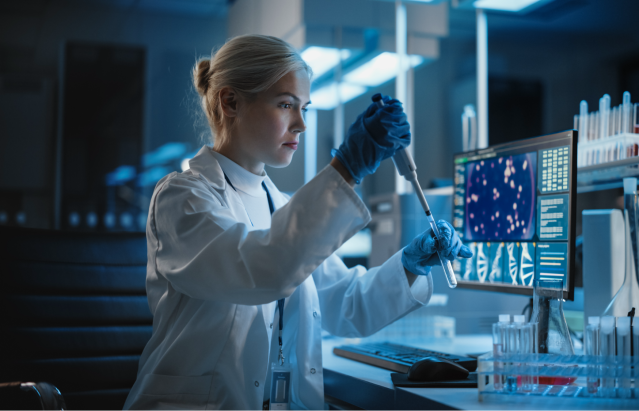In recent years, the lab automation in drug discovery market has emerged as a major force in revolutionizing pharmaceutical research. Automation is reshaping the way drugs are discovered, tested, and developed, accelerating the process and improving both the speed and accuracy of drug development.
The global lab automation in drug discovery market is expected to grow significantly, with a forecasted CAGR of 12.9% from 2024 to 2032. The market is anticipated to reach USD 12.5 billion by 2032, driven by the increasing need for faster drug development, the demand for personalized medicine, and the rapid advancements in automation technologies like robotics and artificial intelligence (AI).
Key Factors Driving Market Growth
- Increased Drug Discovery Efficiency: Traditional drug discovery involves lengthy and labor-intensive processes. With lab automation, high-throughput screening, and robotic systems, pharmaceutical companies can test and analyze thousands of drug compounds in a fraction of the time. This reduction in time-to-market is crucial for developing drugs that meet the urgent medical needs of patients.
- Artificial Intelligence and Machine Learning: AI and ML technologies have become instrumental in the drug discovery process. AI-driven algorithms help analyze biological data and predict the success of potential drug candidates. These technologies enhance decision-making by identifying correlations between compounds and their biological targets, speeding up the process of identifying viable drug candidates.
- Precision Medicine: Personalized medicine is gaining prominence, as treatments are increasingly tailored to an individual’s genetic makeup. Automation tools, particularly AI and ML, help in analyzing genetic data and identifying genetic markers that can lead to more effective treatments. Lab automation systems accelerate this process by streamlining the analysis of vast genetic datasets.
Technologies Shaping the Future of Lab Automation
- Robotics: Robotic systems are used to automate routine tasks such as liquid handling, sample preparation, and compound screening. This reduces human error, increases throughput, and frees up researchers to focus on more complex tasks.
- High-Throughput Screening (HTS): HTS is an essential technique in drug discovery, allowing the testing of large numbers of compounds quickly. Automation makes it possible to perform these tests on a much larger scale, increasing the likelihood of identifying novel drug candidates.
- Data Analytics: With the vast amount of data generated during drug discovery, advanced data analytics platforms, powered by AI and ML, help researchers make sense of the information. By automating data analysis, researchers can quickly interpret results and make informed decisions.
Regional Insights and Market Dynamics
- North America continues to lead the market, largely due to the presence of top pharmaceutical companies, research institutes, and strong investments in automation technologies.
- Asia-Pacific is projected to be the fastest-growing region, thanks to rising healthcare investments and the increasing adoption of automation in drug discovery.
Challenges and the Road Ahead
Despite its benefits, lab automation faces certain challenges. The high upfront costs of automation equipment and the need for skilled personnel to operate complex systems can hinder widespread adoption, particularly among smaller biotech firms and contract research organizations (CROs).
However, as technology improves and automation tools become more affordable, adoption will increase, providing numerous opportunities for pharmaceutical companies to accelerate drug discovery, reduce costs, and improve accuracy.
The future of drug discovery lies in the continuous integration of lab automation technologies, enabling faster development of drugs that are safer, more effective, and more personalized to individual patients’ needs. With automation driving the next generation of pharmaceutical research, the landscape of drug discovery will continue to evolve, benefiting both patients and the healthcare industry.

